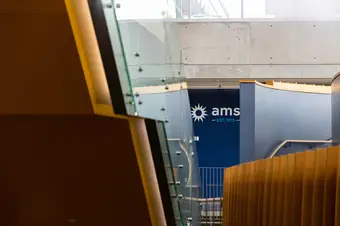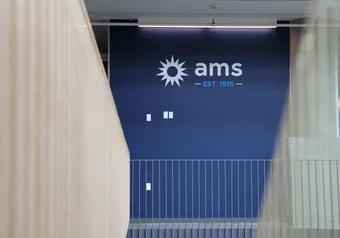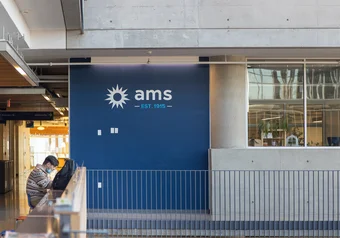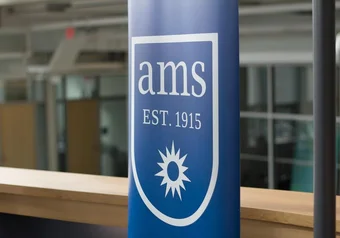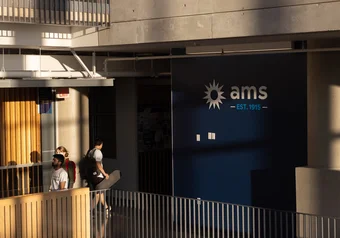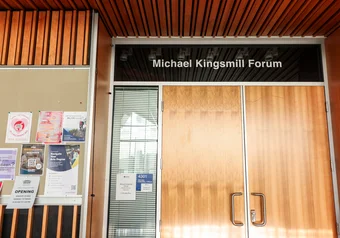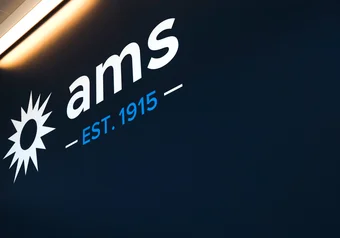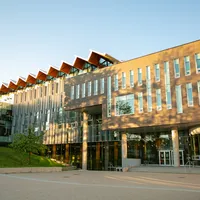Last night, AMS councillors approved the sale of three art pieces owned by the AMS and heard from AMS equity, diversity and inclusion (EDI) leaders about the student society’s equity goals.
Here’s what you might have missed.
The AMS is not an auction house
Last night, the councillors voted on a motion to sell three art pieces in an effort to address its $1.25 million deficit.
The three art pieces — “Abandoned Village, Rivers Inlet” by E.J. Hughes, “South of Coppermine” by A.Y. Jackson and “Northern Image” by Lawren Harris — are part of the AMS’s Permanent Art Collection. Students overwhelmingly voted to sell these pieces, along with another which AMS President Eshana Bhangu said has been sold already.
During student-at-large statements earlier in the meeting, Violetta Lapinski, a master’s in art history student, said she thought the AMS should have publicized the decision to sell this “rare and unique collection” to students ahead of the vote.
She said the collection is “used for pedagogy here at UBC” for the art history, visual art and theory department (AHVA), and that the department is working to collaborate with other galleries on campus to orchestrate a public collection viewing for the collection’s 75th anniversary.
“[The art collection] needs to be displayed so that students can see it,” said Lapinski.
Bhangu responded to the concerns, citing financial obstacles.
“We have a $3.8 million art collection which we’re only able to display once per year,” she said, noting it costs $40,000 a year to display the paintings. She also said it is not a “lack of willingness to display,” but simply a cost issue. According to the motion, the paintings are worth $2.35 million.
Moreover, she believes maintaining and owning this collection is “beyond the depth of a student union’s mandate.” By selling the paintings, she believes it can help address AMS’s $1.25 million deficit while preventing a fee increase referendum.
“We’re not professional art collectors. We’re a student union,” said Bhangu. The decision was “deliberated extensively” between the execs and the interest generated from the sale will be discussed between the finance committee and arts subcommittees.
The motion to authorize the art sale was passed with little discussion.
AMS presents equity goals and progress
Bhangu and the AMS Equity Team — Alexis Vollant, Romina Hajizadeh and Viola Chao — presented ten goals on equity positions and frameworks.
Chao said the overarching goal is to implement the best Equity, Diversity and Inclusion practices in the AMS.
“We want to make sure the EDI is embedded within the office in the AMS,” said Chao while explaining the first goal outlining constant accessibility to the Equity Team for the Executive Committee.
Many of the goals surrounded the AMS student government and staff. Hajizadeh said they have already completed the goal of providing EDI support within each constituency. Chao added that they plan to further their efforts by facilitating mandatory annual EDI training.
To mitigate student staff turnovers, Hajizadeh said the AMS plans on creating a full-time EDI staff member by April 2023. By then, they are also hoping to have created periodic EDI assessments.
“Goal eight is to create a mental health task force and mental health survey,” said Hajizadeh. This survey will be sent to all students this semester.
Another new creation involves an Indigenous strategic task force. Vollant, who serves as the Indigenous engagement facilitator, said this task force will create a new role, the Indigenous affairs coordinator. He also said the task force will work on Indigenous cultural events and the implementation of the Indigenous strategic plan.
By the end of this academic year, Vollant said goal ten will facilitate “genuine collaboration and communication” with Indgienous constituencies and groups on campus and to keep working to “maintain relationships with surrounding First Nations communities.”
Max Holmes, the Board of Governors representative on Council, said the goals seemed “quite ambitious about what can be accomplished within a year.” He also questioned whether some of these tasks fell outside the scope of the EDI department, as well as who was consulted on the goals.
Bhangu said the execs and constituencies were consulted. She also said the goals will not be completed one at a time, but in conjunction with each other.
First online
Share this article


